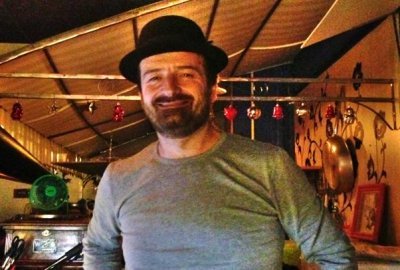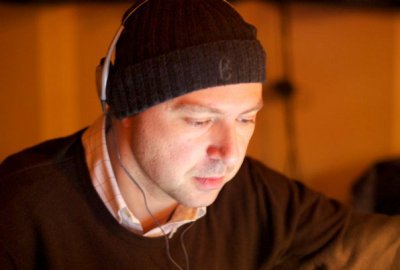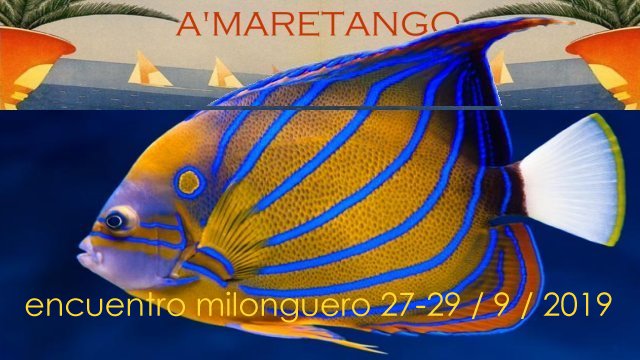|
Interview
with Chamaco
-
Would you tell us something about your style to pass tango music in the
milongas?
My way of DJing in the milongas is connected to the Buenos
Aires traditions that I like to respect; certainly I have to accomplish
the dancers but always following the "tradicion porteña. The most of the
orchestras I choose are dated between 1935 and 1955; very seldom I pass
consecutively 2 tandas of the pre-D'Arienzo period (before 1935) or 2
tandas of the fifties. In the height of the night I like to pass also
melodic tango and not only rhythmic tandas. I believe in the "pillars
orchestras" of dancing tango, that is the orchestras which absolutely
cannot be missing among the tandas of one milonga: Juan D'Arienzo, Carlos
Di Sarli, Rodolfo Biagi, Miguel Calò; also Troilo and Pugliese should
be always played, but in Italy is a little more difficult to pass them
in the "warm part" of the night. Finally, D'Agostino and Tanturi - so
well deep-rooted in the Baires tradition - may not be fundamental but
it is difficult to leave them out of the playlist. During my milongas
I like to to pass with thriftiness some less known "pearls", but only
if I feel that the dancing floor can appreciate them: the tango-DJ is
not at the console to show up his collection, but to enjoy the tangueros.
So the less know "pearls" must be like "cherries on the cake": they are
good but they must have a good cake underneath, based on popular orchestras
and well known themes.
- The peculiarity that has distinguished you is the blackboard.
What you want say about it?
Well, because I am not Felix Picherna I don't dare to announce the tandas
by voice (in fact it is not in the milonga tradition a talking Dj), so
I use a black board on which to write the "passing now" tanda and the
"following" tanda. This is not done with an intention of "teaching" to
the dancers - they are there for dancing and not for studying - but for
a practical goal. All tangueros, masters or beginners, like different
partners for different kinds of music ( melodic, rhythmic, vals, milonga
) as much as there are dancers who prefer not to dance vals or milonga
or some orchestras. To know in advance what tanda is following it permits
to: - get ready to invite the right partner - to defer the cigarette or
the bathroom because the favourite orchestra is coming - to go for cigarette
or toilette because a disliked tanda is coming.
- Which experience as a musicalizador remained more precious in
your memory and why?
The following ones, I think:
a) 5 minutes of applause at the end of the Raduno Milonguero di Kehl in
2012; it has been touching.
b) at the Contatto, in Spinea, when for the first time I saw the perfect
"ronda": all couples moving together as one body. A unic emotion.
c) Every time I dj at Maquina Tanguera in Rimini, where I am the resident
dj: it feels like "home" , to dj for friends in your own place is always
an extraordinary feeling.

Dj Chamaco (Mauro
Casadei) From
Rimini, Tango DJ since 2007, his style is based on the equilibrium between
rhytmic and melodic tandas. 90% of his selections consists of music from
the 1935-45 , including some choices from early '30s, always giving most
importance to the classic orquestras of Buenos Aires tradition.
|
Interview with Giovanni Carta
-
To listen tango, to dance tango, to dj tango: the differences and the
most fascinating aspects for you...
Any kind of music is done above all to be listen to. Those who have the
musician skill can play it; those who wish can dance it; anyone though
can listen to it and with great pleasure. That is particularly true for
tango. The tango passionate people - simply music lovers or "milongueros"
or tango teachers or Tdjs, must first of all listen to tango music, always,
in any occasion. A careful listening increases the quality of dancing.
Obviously a good dj must be a voracious, tireless listener: that allows
to be up-to-dated, to vary the selections, to refine the taste. The most
fascinating aspect, from my point of view, is that I never stop to be
amazed, I never stop to discover new themes and I realize that my preferences
keep changing, so that some songs or orchestras which in the past I did
not consider too much, today they rise to the first positions of my personal
hit-parade. Even for such a reason, when djing, it is important to sweep
over the various orchestras and the different periods of tango.
- What are for you the aspects of traditional djing in the milongas
which should never be forgotten?
The
first one is to reach and keep a good level of energy on the dance floor
by offering a wise mix of ingredients such rhythm, melody, instrumental
and sung themes, different styles and epochs. A universal recipe doesn't
exist, but each "musicalizador" should undertake to do it: often the result
is very positive, sometime not so much, but at least you must try.
The second aspect is to alternate tango, vals and milonga giving the right
privilege to tango.
The third point is that danced Argentine Tango includes 3 decades, from
the thirties to the fifties, with most importance on the forties. Also
there is the indisputable tradition of making homogenous tandas by orchestra,
period, singer.
Finally I'd like to consider the "cortinas", which are not simply songs
played to end the "tanda" and give time to dancers to empty the floor.
They are part of the milonga and must be chosen carefully so to keep the
right mood of the party.
- Which orchestras are never missing in your nights?
Maybe
it is easier to tell you which ones I disregard. In this time of my life
I never pass De Angelis, seldom I pass Pugliese if the dancing floor seems
to need it... The orchestras which are always present in my selections
are D'Arienzo, Tipica Victor, Biagi, Di Sarli, Canaro.
- Which is your experience as dj that remained more vivid in your
memory and why?
For me djing is not a profession, I do it just every once in a while,
for passion, so each time I am very involved in the emotions that any
milonga gives to me. I cannot think of a special experience, but I remember
a bunch of exciting moments of being deeply on the same wawelength with
the tango dancers. Anytime I breath enthusiasm on the dancing floor then
I am a happy dj: such a growing pathos that is shared among everyone is
like a magic and it makes the night unforgettable.

Dj Giovanni Carta,
from
Florence, he djs for passion of tango music since 2006. He proposes traditional
tandas, choosing the best orquestras of the years '30s, '40s e '50s, always
seeking the best energy wave for dancers by making a good balance between
rythm and melody.
|
